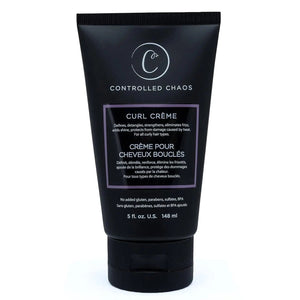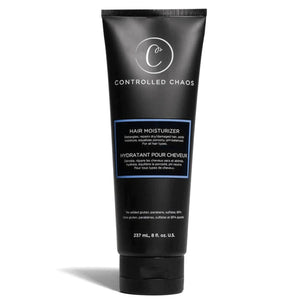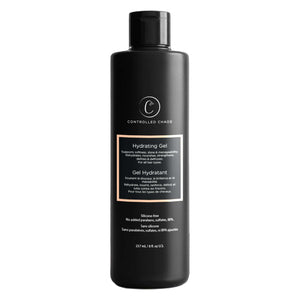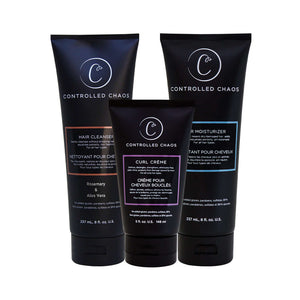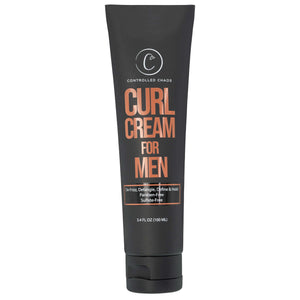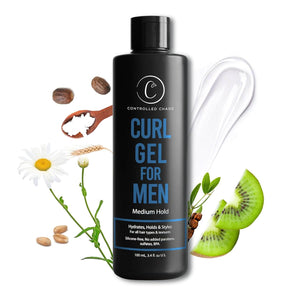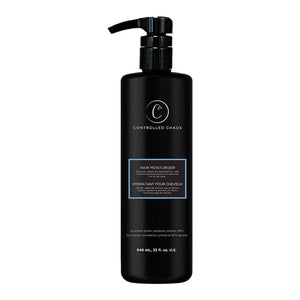

Curly hair, with its natural volume and texture, can be stunning and challenging to maintain. From frizz to dryness, curls often require extra attention to stay defined, moisturized, and healthy. However, your curls can thrive and look their best with a simple and consistent routine. In this guide, we’ll walk you through a basic curly hair routine that’s easy to follow, practical, and perfect for achieving beautiful curls.
Step 1: Cleanse Your Curls
Proper cleansing is the foundation of any curly hair routine. Curly hair tends to be drier than straight hair, so avoiding harsh shampoos that strip away natural oils is essential. Look for sulfate-free shampoos or co-washes (conditioner washes) that cleanse the hair gently while maintaining moisture.
How to do it:
-
Wet your hair with warm water.
-
Apply a small amount of shampoo or co-wash to your scalp, massaging gently to lift dirt and buildup.
-
Rinse thoroughly, ensuring your scalp is clean, and your curls are left hydrated.
Step 2: Condition and Hydrate
Conditioning is crucial for curly hair. It helps replenish moisture, reduces tangles, and makes curls softer and more manageable. Choose a conditioner rich in moisture, as this will help keep your curls hydrated and reduce frizz.
How to do it:
-
After rinsing out your shampoo, apply a generous amount of conditioner to your damp hair.
-
Focus on the mid-lengths to the ends, where hair tends to be drier.
-
Leave the conditioner in for 3-5 minutes to deeply hydrate your curls. Then, rinse with cool water to seal the hair cuticle and enhance shine.
Step 3: Apply a Leave-In Conditioner or Curl Cream
Leave-in conditioners or curl creams are essential for maintaining curl definition and preventing frizz. These products provide an extra layer of moisture and protection while defining curls. They help control frizz and enhance your natural curl pattern.
How to do it:
-
After rinsing your regular conditioner, apply a leave-in or curl cream to your damp hair.
-
Work the product through your hair with your fingers, ensuring even distribution.
-
For more defined curls, use the “praying hands” technique (smoothing the product over sections of hair) or the “raking” technique (running your fingers through your hair to separate curls).
Step 4: Scrunch Your Curls
Scrunching is an essential step to encourage curl formation and add volume. It helps to define curls and add bounce without weighing them down. If you have particularly tight curls, scrunching will help them hold their shape as they dry.
How to do it:
-
While your hair is damp, bend over and scrunch your curls upward toward your scalp using your hands.
-
Repeat this motion until all sections of your hair have been scrunched.
-
You can also scrunch your hair with a microfiber towel or an old cotton T-shirt, as these materials help reduce frizz compared to traditional towels.
Step 5: Dry Your Curls
There are several ways to dry curly hair, and your choice can impact the texture and volume of your curls. The two most common methods are air drying and using a diffuser.
Air-drying:
-
If you have time, let your hair air-dry. This method helps curls form naturally without adding heat. To prevent frizz, avoid touching your hair while it dries.
Using a diffuser:
-
Use a blow dryer with a diffuser attachment for faster drying and more volume. Set it on a low or medium heat setting and dry your curls by scrunching them with the diffuser. This method helps curls retain their shape while also adding volume.
Maintain and Protect Your Curls
Maintaining healthy curls is not just about washing and styling. It’s essential to protect them from damage caused by heat, environmental stressors, and over-manipulation.
How to do it:
-
Night care: To protect your curls at night, use a satin or silk pillowcase, which reduces friction and prevents frizz. Alternatively, wrap your hair in a silk or satin scarf or wear a loose pineapple (a high ponytail) to keep your curls intact while you sleep.
-
Regular trims: To keep your curls looking their best, schedule regular trims every 6-8 weeks to eliminate split ends and maintain shape.
-
Heat protection: If you occasionally use heat styling tools, apply a heat protectant spray before using them to minimize damage.
Deep Condition Weekly
Due to its unique structure, curly hair is naturally drier and more prone to damage. Therefore, deep conditioning is essential in maintaining healthy, hydrated curls. A weekly deep conditioning treatment will help replenish moisture, nourish your strands, and enhance curl definition.
How to do it:
-
Choose a deep conditioner specifically designed for curly hair. Look for one with rich ingredients like shea butter, argan oil, or avocado oil.
-
Apply it to damp hair after shampooing, focusing on the mid-lengths and ends.
-
Cover your hair with a shower cap or a warm towel to help the product penetrate deeply.
-
Leave the treatment on for 20-30 minutes, then rinse thoroughly.
-
If you're in a hurry, you can also opt for a quick 10-minute deep conditioning mask, but weekly treatments provide the best long-term results.
Avoid Over-washing
Curly hair doesn’t need to be washed every day. Washing it too often can strip away essential oils, leaving it dry and prone to frizz. Depending on your hair type and lifestyle, wash it no more than two to three times weekly.
How to do it:
-
When you don’t wash your hair, you can refresh your curls with a light mist of water or a curl-refreshing spray.
-
If your scalp feels greasy, use a dry shampoo to absorb excess oils and refresh your roots.
-
On non-wash days, focus on maintaining curl definition by applying a small amount of leave-in conditioner or curl cream to revive your curls.
Your Natural Texture
One of the most important aspects of caring for curly hair is learning to embrace your natural texture. Every curl pattern is unique, and part of having healthy, beautiful curls is accepting and working with what you have rather than fighting it.
How to do it:
-
Experiment with different products to find what works best for your curl type. What works for someone else may not be suitable for your unique curls.
-
Avoid constantly manipulating your curls with excessive brushing or straightening. Let your natural curls form and breathe; you’ll see less breakage and frizz.
-
Be patient as you discover your curl routine. Over time, you’ll learn how to keep your curls defined and healthy without forcing them into a style unsuitable for your hair.
Invest in the Right Tools
The tools you use can greatly impact the health and appearance of your curls. Using the right combs, brushes, and accessories can help reduce breakage, minimize frizz, and keep your curls looking their best.
How to do it:
-
Wide-tooth comb: Use a wide-tooth comb or your fingers to detangle your hair while it's still wet and conditioned. This minimizes breakage and helps maintain curl definition.
-
Microfiber towel: Instead of a regular cotton towel, use a microfiber towel or a soft t-shirt to blot your curls. This helps absorb excess water without causing friction and frizz.
-
Scrunchies: Use fabric scrunchies or hair ties that won’t pull on your curls or cause damage. These are gentler on your hair than traditional elastic bands.
Know Your Curl Type
Not all curls are the same, and knowing your specific curl type is key to selecting the right products and techniques. Curly hair typically falls into one of four categories:
-
Type 1: Straight hair
-
Type 2: Wavy hair
-
Type 3: Curly hair
-
Type 4: Coily or kinky hair
Each type has different needs, and understanding your curl pattern will help you find the right products and styling methods to enhance your natural texture.
How to do it:
-
Take some time to analyze your curl type and experiment with different products to see how they respond to your curls.
-
For tighter curls (Type 3 or 4), look for richer creams and oils that provide moisture and definition. For looser curls (Type 2), lightweight gels or sprays may work best.
Conclusion
Achieving beautiful, healthy curls doesn’t require a complicated routine. You can maintain gorgeous, bouncy curls that shine by following simple steps—cleansing, conditioning, styling, and protecting. It’s important to remember that curly hair requires extra care and patience, but the effort is worth it when you see your curls at their best.
Whether you have loose waves or tight coils, this basic curly hair routine is a great starting point for anyone looking to embrace their natural texture. With consistent care, the right curly hair products, and a little love, your curls will genuinely reflect your beauty.
FAQS
What is a basic curly hair routine?
A basic curly hair routine involves cleansing, conditioning, and moisturizing your curls. Start using a sulfate-free shampoo or co-wash, followed by a hydrating conditioner. Apply a leave-in conditioner or curl cream to define and hydrate curls, and finish by gently drying with a microfiber towel or air-drying to preserve curl shape and minimize frizz.
What products do I need for a basic curly hair routine?
For a basic curly hair routine, you’ll need a sulfate-free shampoo or co-wash to cleanse, a moisturizing conditioner to hydrate, a leave-in conditioner or curl cream to define curls and a gentle towel or microfiber cloth for drying. Optional products like a deep conditioner or heat protectant can be added for extra care.

